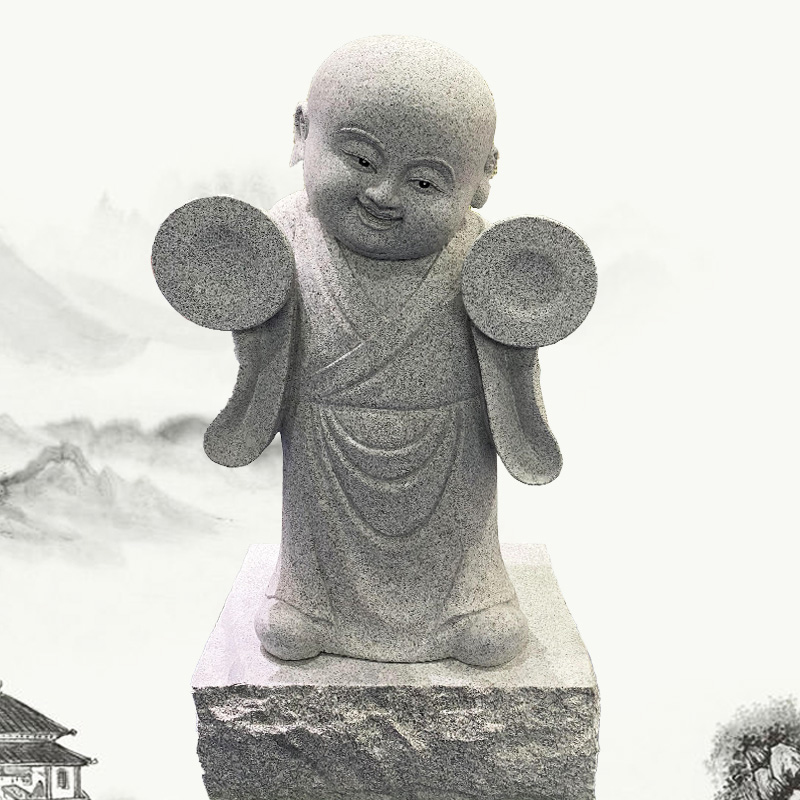Calculate the required height proportionally based on the Marble Sculpting model. The stone carving inner skeleton specifications are 12#, 10# and 6.3# channel steel, 76㎜*3㎜, 50㎜*3㎜, 32㎜*2.75㎜ pipe, 5㎜ angle steel, from bottom to top, from thick to fine, from dense to dense. Welded to sparse. Before welding, in addition to checking the flatness of the cut, pipes with a wall thickness of 4mm or more should be processed with V-shaped grooves, and a groove gap should be left at the pipe end. All load-bearing frames are fully welded on both sides. After completion, the entire frame is fully coated with anti-rust paint three times.

1. Main load borne by the main support
(1) Weight of main bracket, auxiliary bracket, bronze wall panels and other accessories
(2) Stable wind load. Under the selected wind speed, the wind force acting on the statue from the front, side, and back is generally considered. In order to improve the safety of the structure, an amplification system building should be added to the calculated actual weight and wind speed for the design of the main bracket and auxiliary bracket. The magnification factor varies from
stone sculpture to stone sculpture. Due to differences in wind speed, temperature difference and the structure of the statue itself, the first two must be selected from local statistical data for many years; the latter must be considered from the ratio of the height of the statue to the diameter of the base: the wind load can be calculated based on the selected wind speed. It is then verified using measured data from model wind tunnel tests.
2. Main bracket shape and size
The shape and size design of the main bracket are measured through a 1:5 sample model. Starting from the bottom plane, take the line point at the intersection of the vertical Z-axis cross section and the outline of the stone sculpture, and measure its plane coordinate value. The number of points should be based on a curve that can accurately draw the outline shape of a complete circle on this section. After multiplying the measured coordinate values of each point by 5, the plane coordinate values of the 1:1 full-size image are obtained. The cross-section spacing on the Z axis is 0.5 (1: 1 value), and the spatial coordinates of the entire stone sculpture shape are obtained by measuring upward layer by layer. Then, the shape of the main bracket is similar to the stone sculpture, with a gap of 0.5~1.0m between the two, thus determining the shape and size of the main bracket.
3. Main forms of support
The main frame is welded with channel steel, angle steel and other section steel. It has good rigidity and strength and is easy to manufacture and install. Most of them make it difficult to accurately measure geometric shapes. During the installation process, collisions often occur between the main bracket and the copper wall panel. However, the shape of the stone-carved copper siding is not allowed to be changed, only the main bracket can be modified.
4. Auxiliary support height gauge
The shapes of Marble Sculpting are often irregular. The outline shape of the main bracket cannot be completely consistent with the shape of the inner cavity of the statue, and the copper wall panels cannot be hung directly on the main bracket. The load on the copper wall panels must be transferred to the main supports and allowed to be borne. Unlike the expansion coefficient of steel and copper alloys, when the ambient temperature changes, the expansion coefficients of the two will be different. If it is a rigid edge seam, huge tensile and compressive stress will be generated between the two, which is enough to destroy the copper siding. At the same time, for tall open-air cast copper and stone sculpture, the temperature difference between the direct sunlight part and the surface of the back part has been measured to be more than 10 degrees Celsius. The addition of copper wall panels will produce a large temperature difference stress, especially in the welding areas between copper wall panels. , very sensitive to temperature differences. In addition, the actual installation stress also requires some free compensation margin between them to eliminate or reduce these stresses and ensure the safe use of the structure. These requirements must be addressed through the proper design of auxiliary supports. In the structural design of the sub-bracket, a single copper wall plate is often used as a separate body, and a lifting lug is cast on the wall plate to connect it to one end of the sub-bracket, while the other end of the rod is connected to the main bracket.



